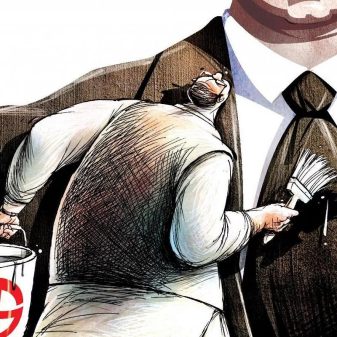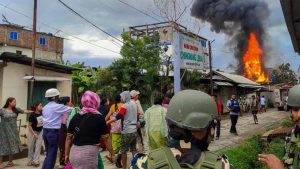
Recently, a female community leader from Bishnupur district wondered why anti-Covid-19 vaccination centres are not opened at the locality level and whether there are logistical problems faced by the government with the organisation of such mini camps that is making the idea infeasible at the moment. Her contention was that lessening the complication of getting the vaccination will improve the coverage rates. For example, there are many people with movement issues, senior citizens, physically disadvantaged and medically infirm people, who are unable to find a way to reach the vaccination centres but willing to take the shot if it is brought to reachable distances. Many have timing issues and others are still concerned with crowding at the centres. The hidden logic is the more complication of getting the shot, the lower the coverage rates. Thus, the local administration needs to alter the vaccination process by implementing vaccination systems that fit into the lives of the people. Vaccination may be voluntary but if it is more easily accessible the individual sitting on the fence will ultimately take the shot without anybody’s persuasion as the worst cynics are aware of the popularity of the vaccination process worldwide and are invariably lured by the potential benefits of the vaccines some parts of every day.
Protection through vaccination is the most bankable way forward in controlling the pandemic although testing, tracing, treating and following appropriate behaviours are also very potent weapons in this war. The state government is finding right now that convincing people to get vaccinated is becoming a Himalayan task itself. Especially, in rural and hills areas, the numbers have spoken that people are very reluctant to get the vaccination, predicting that it will cause irreparable health damage or even get killed by it. Probably, this is why people from these areas have not responded well to the vaccination programmes despite the wholehearted government campaign. A number of vile propagandas are also infested in the social media with ill-founded rumours challenging the declaration of safeness and efficacy of the vaccines by the government. There are unexpectedly hundreds of people participating in such discussions and these rumours can create a stubborn mindset against vaccination. The scepticism is also linked to the unprecedented speed of the development of the Covid-19 vaccines as well as negative reports about the side effects of some of the vaccines in Europe and the United States. This is a problem that the administration cannot afford to overlook or ignore totally. The problem haunting the administration right now is not the question about whether they can make a breakthrough on overcoming vaccine hesitancy but how soon they can make a breakthrough as ending the pandemic is almost solely dependent on rolling the vaccination programme smoothly. All the sincerity of its previous attempts accepted, the administration needs to intensify it further and take up a multi-pronged approach to clear misconception and achieve the desired results. Probably it will help the administration to create a counter communications campaign that focusses on reinforcing trust and assigning trained people to dumb down the negative discussion.
It has been observed that the participation of clubs and community leaders are not enough as a bigger blow is necessary to dispense all misgivings about the vaccination. In fact, members of Parliament, MLA, local body representatives should even be co-opted in the team to talk with the villagers, even individually if the requirement arises. However, even in such a circumstance, the bulk work will be in the hands of local leaders, elected members, and ASHA workers as door-to-door campaigns will be composing a chunk of the groundwork. In addition, the government should rope in the service of respected elders and white collared members of the community. Dealing with people who have vaccination hesitancy is the greatest challenge. Common sense will tell us that engaging in an argument to drop their stand will not do any good. The visible plan of nudging them into vaccination by making it mandatory for vaccination certificates to enter the state, open shops, visit public place, socialisation etc will ultimately work. It is a safe mechanism. While not forcing eligible beneficiaries into getting the vaccines, but ensuring that without it their movement gets gradually curtailed. This is probably enough to get to a majority of the population who venture outside and mix socially to join the immunisation programme.
Another definite concept for mass vaccination is the more the roll out of vaccines is increased there will be more people receiving the shots. It will also motivate non committed individuals to get the vaccines pulled by the sheer gravity of the increasing numbers of beneficiaries.





